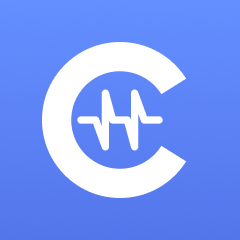CueHit was started by Public Safety Technology veterans in order to provide a continuous feedback loop between agencies and the communities they serve. Our solution was built on a rules-based, intelligent assistant that enables text exchanges for satisfaction surveys after encounters, automatic updates to citizens via text and inbound “bot-attended” chat for feedback, tips, requests, reports and more.
SMS Surveys
Automatic text surveys sent a few hours or a few days after 9-1-1 calls to measure satisfaction of callers for non-critical incidents.
Feedback Board
Improving staff morale with positive citizen feedback. Dynamic positive feedback board for display throughout the department.
Data Analytics and Dashboards
Enabling departments to analyze response rates to surveys over time to measure engagement. Many 9-1-1 centers are seeing greater than 50% response rates!
Automatic Email Digests
Automatic email delivery of personal satisfaction score to officers with summary of positive comments received from citizens.
And much more!
Chatbot Experience, Automation Rules, Performance Email Digest, Follow-Up Tasks, Video Chat, Telehealth, Patient Details and Insurance Insights, Messaging Experience, Triage and Personnel Assignment, Marketing Site, Team & Role Experience and Management
Cofounder & Head of Design
2019-2021
Designed and built the front-end of a SaaS targeted at 911 call centers, law enforcement, EMS, and fire agencies that reshapes citizen connections for public safety. Partnered with Union County PD and 9-1-1 in New Jersey to introduce a new era of community engagement for public safety. Thanks to our innovative solution, the NJ department is seeing a 50% response rate for post-incident surveys vs less than five percent before. Designed and built the front-end of many innovative features - surveys, automated rules, communication tools (text/email/video calls/chatbots), analytics, internal mobile app, etc. After partnering with 50+ paying customers ranging from police departments to 911 call centers and incurring 1M+ in ARR, CueHit has been acquired by NEOGOV.
Design
End-to-End Product Design, UI Design, User Research, Interaction Design, High-Fidelity Prototyping, Usability Testing, Figma
Front-End Development
React.js, Gatsby.js, CSS/SASS, UI Architecture
Platforms
Web (Desktop), Mobile (Cross-Platform)
Business
Public Safety, SaaS, B2B
Satisfaction Surveys
Transforming connections and communication between the American public and first responders by creating a modern solution that revolutionizes how public agencies respond, engage, and get insights on public safety - leading to better outcomes for all.
Situation
Audience
Our goal was to improve lives of the general public, as well as first responders - ranging from 911 call-takers, law enforcement, to fire/ems.
The Problem
When a member of the public (the caller) encounters an emergency, they will call 911 call center and generally stay on the line until the emergency is resolved.
The 911 call-takers have minimal context when the call starts, and have to ask many questions as well as keep the caller up-to-date along the way with any advice and updates on arrivals as well as to relay any information to law enforcement, fire or ems. All of this happens under immense stress, and more than 80% of call-takers and first responders experience trauma in their job.
Once the emergency is resolved, there’s very few ways to gather feedback from the caller - traditionally this is done by blindly sending surveys via a regular postal service to a few members of the public, resulting in poor response rate - of around 5%, and lacking much context. Additionally, there’s lack of follow-up advice or resource being shared by the call-takers who have the most information about each encounter.

Approach
As a head of design and front-end developer, I was responsible for the end-to-end design process - from working with other co-founders on understanding the problems we wanted to solve to defining and developing the solutions.
To begin with, we embarked on the journey of discovery. The co-founders were public safety technology veterans and former first responders with an immense network which we’ve reached out to and conducted interviews with many police chiefs, officers, 911 call-takers and 911 call center managers to further understand their workflows and painpoints.
We’ve also identified a couple of specialized competitors that some of; however, none of them were tackling the the full end-to-end workflow our potential customers were looking for.
After going through all the learnings from our research, we’ve brainstormed plenty of potential features and organized them in 3 key epics.
Respond
First responders need an easy and efficient way to communicate with the callers, getting as much of context as possible, request location, have an ad-hoc video call, as well as triage conversations and keep things organized based on response groups based on the team and role.

Engage
It's essential to our customers to connect and engage with the community, send automated updates and followups, and define surveys to be send based on specific encounters and many other variables. In addition, chiefs and managers expect to have visibility into how the system is working and what's happening behind the scenes.
We've also brainstormed an idea to improve morale and wellbeing by sharing positive feedback with all teams.
Measure
To close the feedback loop and see the results of all the responders' hard work, chiefs and managers needed a way to perform an in-depth analysis to better understand the quality of service they provide and identify any issues.
The Process
Once each user story was clearly defined, I begin designing possible solutions starting with conversations and surveys, constantly gathering feedback from co-founders and our potential customers, iterating until we were confident our designs would solve our customers' problems, and then I finally moved to implementing UI and layout in React & SASS (CSS) in well structured and componetized approach - working closely with the co-founder who implemented the backend and made the UI I implemented functional show real data.
Outcome
Surveys
The surveys feature enables our customers to define the content of versioned surveys, being able to revise each survey on the fly and set which survey version is active. They can also view results and response rate of each survey, being able to drill down to each individual response and all the context and details around it.
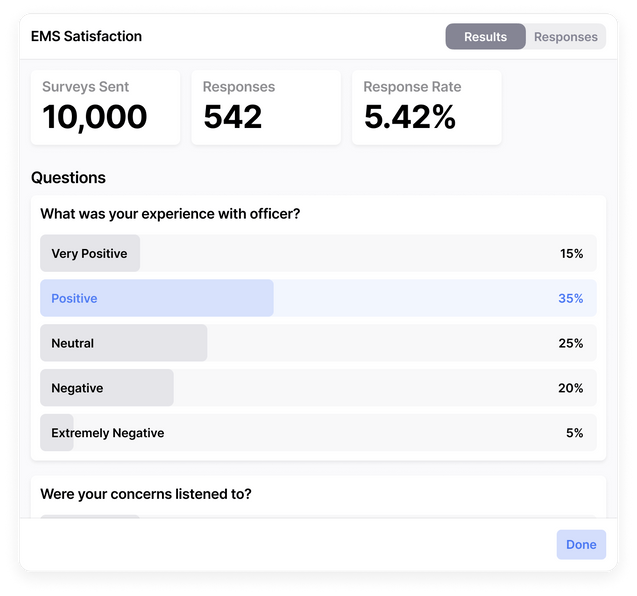

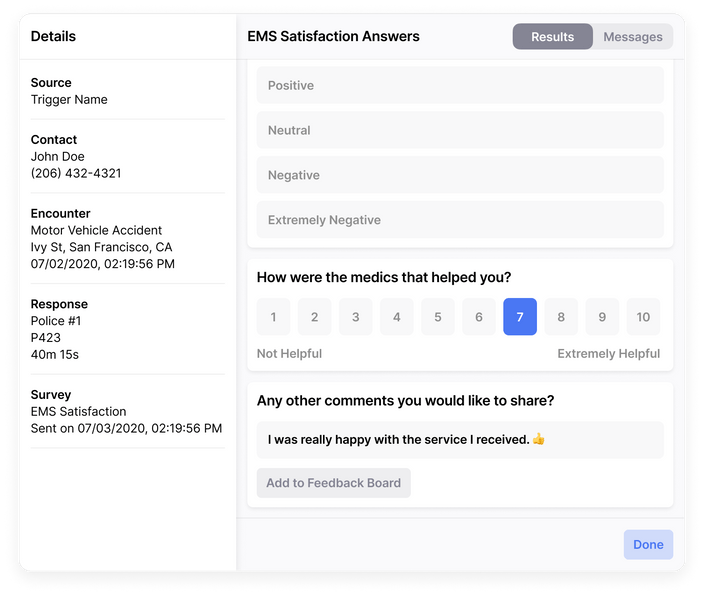
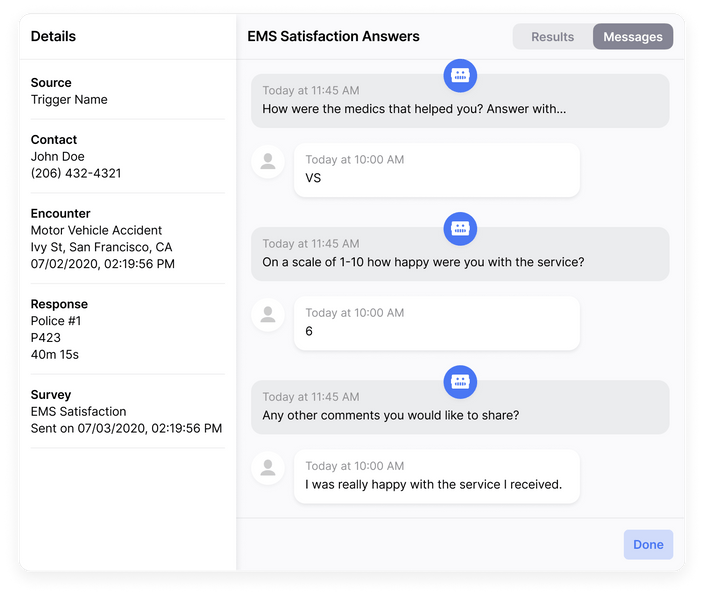
When defining a survey, the user can specify header to provide a personalized introduction and context, define each question which can be a freeform text, range, or a multiple choice, and footer to for example thank people for taking the survey and provide them with more resources.
Thanks to an endless feedback loop, our customers had direct influence how the surveys feature was designed and worked.
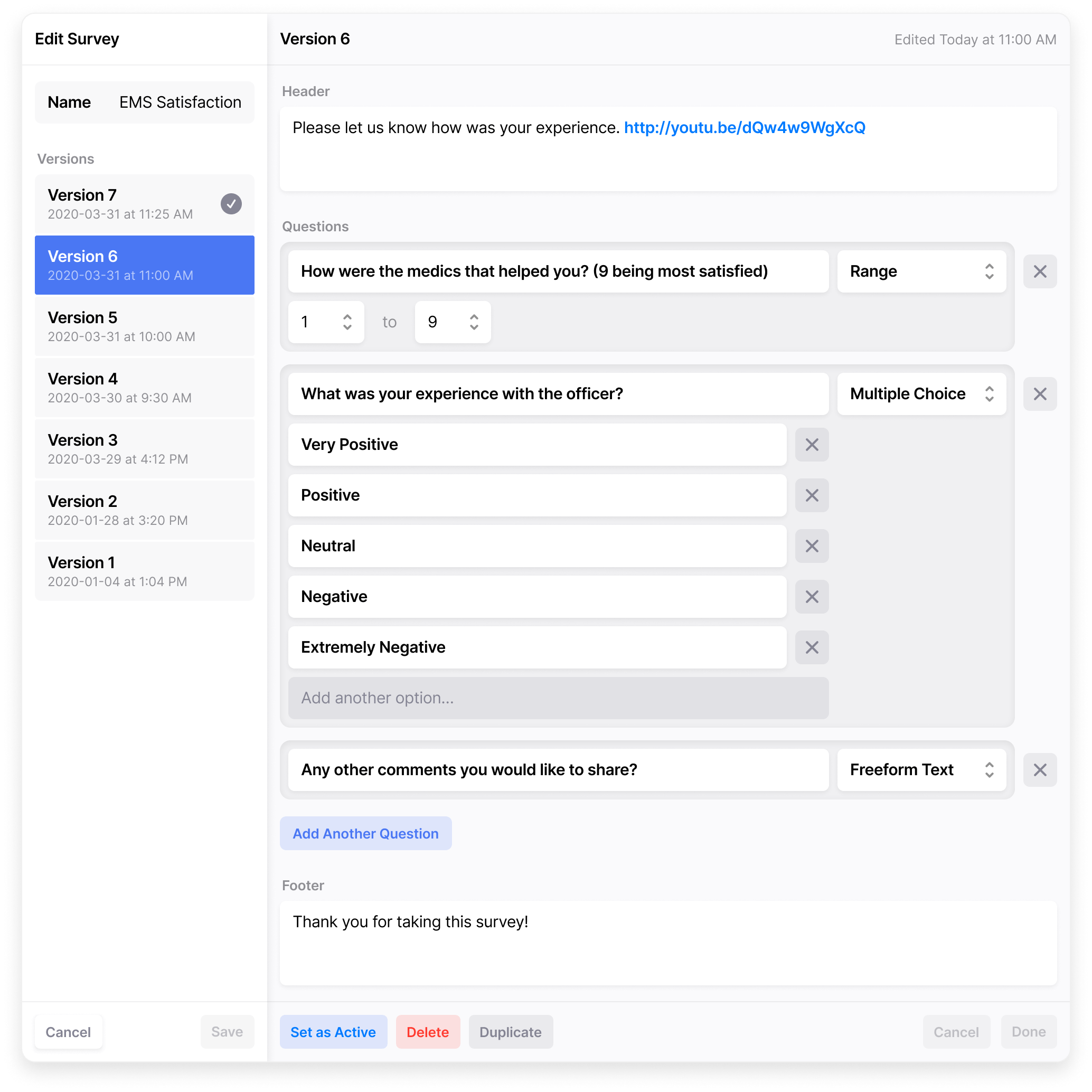
Rules Engine
To give full control of how surveys and other content was sent, we have built a powerful rules engine which connects to each organization's CAD (Computer Aided Dispatch), align with their specific data model and pull the latest data on encounters.
Based on the organization's data model, the user is able to define filters (such as caller city, incident type, time call closed), specify quiet hours when the survey was not sent, select a delay time, and finally specify targets (surveys and miscellaneous messages such as follow up text, ETA notifications, etc.) to ensure that their messages and surveys are sent to the right audience at the right time.
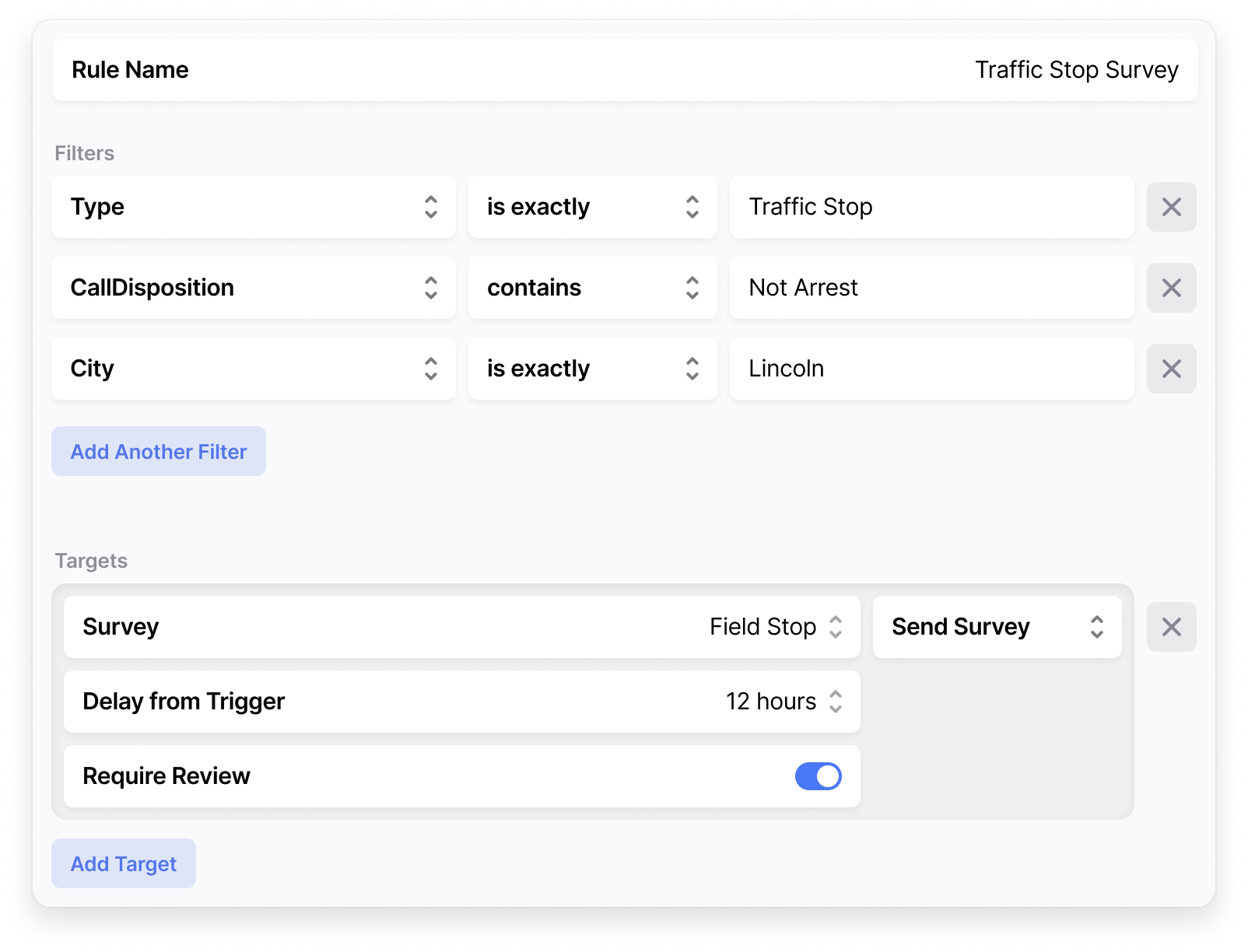
Each rule has versioning system just like surveys, and the user can test run the rule to ensure their rule works as expected before it's active and starts sending messages and surveys to their audiences.
Thanks to an endless feedback loop, our customers had direct influence how the rules feature was designed and worked.

Conversations
The Conversations feature was designed to not just cater for the surveys use case, but to also enable our customers to communicate with their audience, triage conversations based on custom defined status and priority, and get the best context possible around each conversation.
Responders can see all of the conversations at glance sorted by status. If they are part of certain response group, they only see conversations relevant to that specific groups, but if they are members of multiple response groups or are given administrative role, they can seamlessly filter between all the response groups or see all the conversations at once. To easily find specific conversations, the responder can search through the messages. They can also start a new conversation by entering a cell phone number.
Each conversation preview contains the caller name, preview of the last message, priority tag and a count of new messages or followup reminder label.
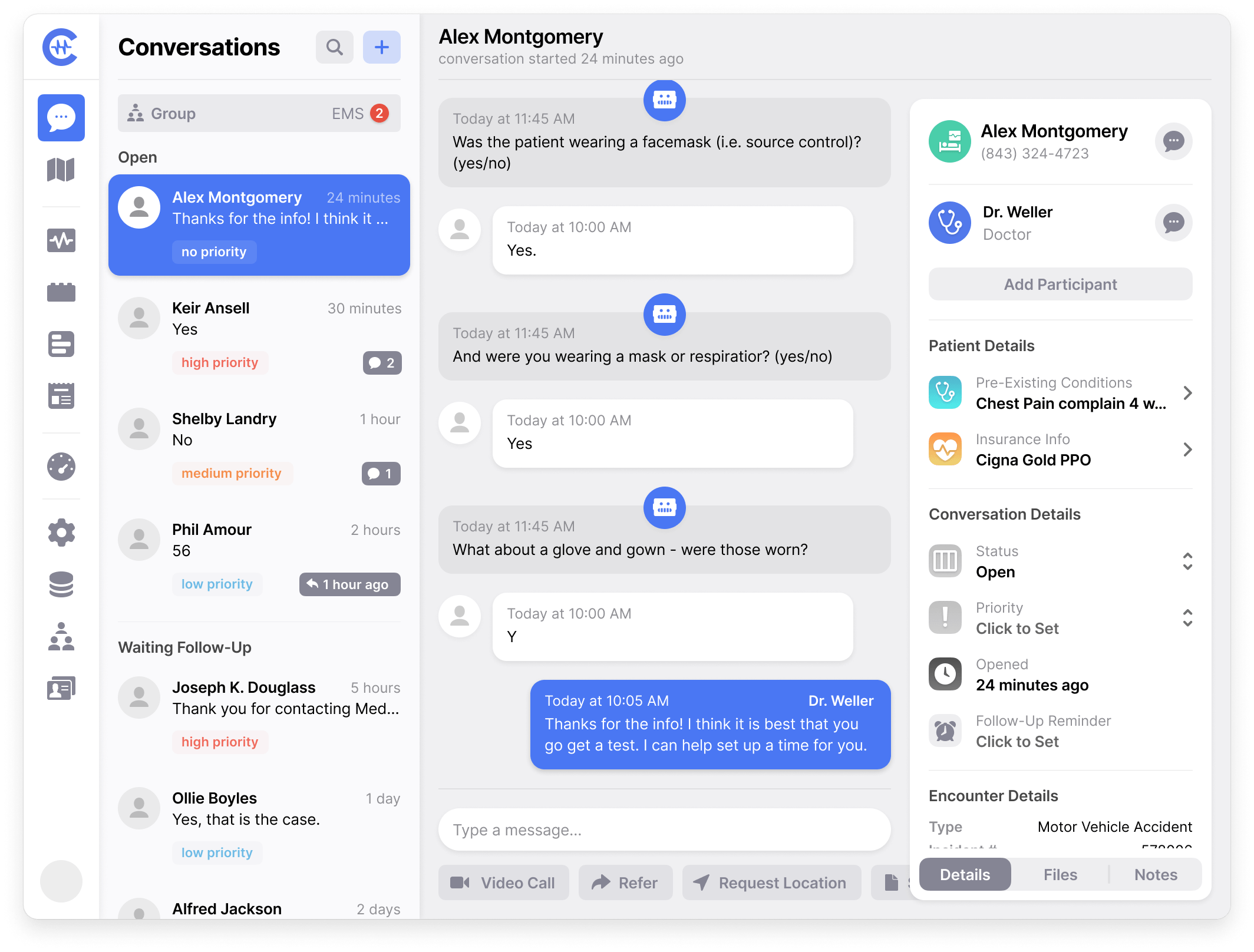
When viewing a conversation, the responder can see at glance all the messages exchanged between the caller and anyone on the platform, including the chatbot. They can request a video call (via our custom ad hoc video chat interface over the web with no app needed), refer the caller to alternative response resources (such as referring to rideshare, coordinating an urgent care appointment, scheduling a tele-consult with a nurse, arrange for a private ambulance or refer to ready responder group), request location (via our custom web portal - no account or app is needed), or share a file (such as PDF or an image).
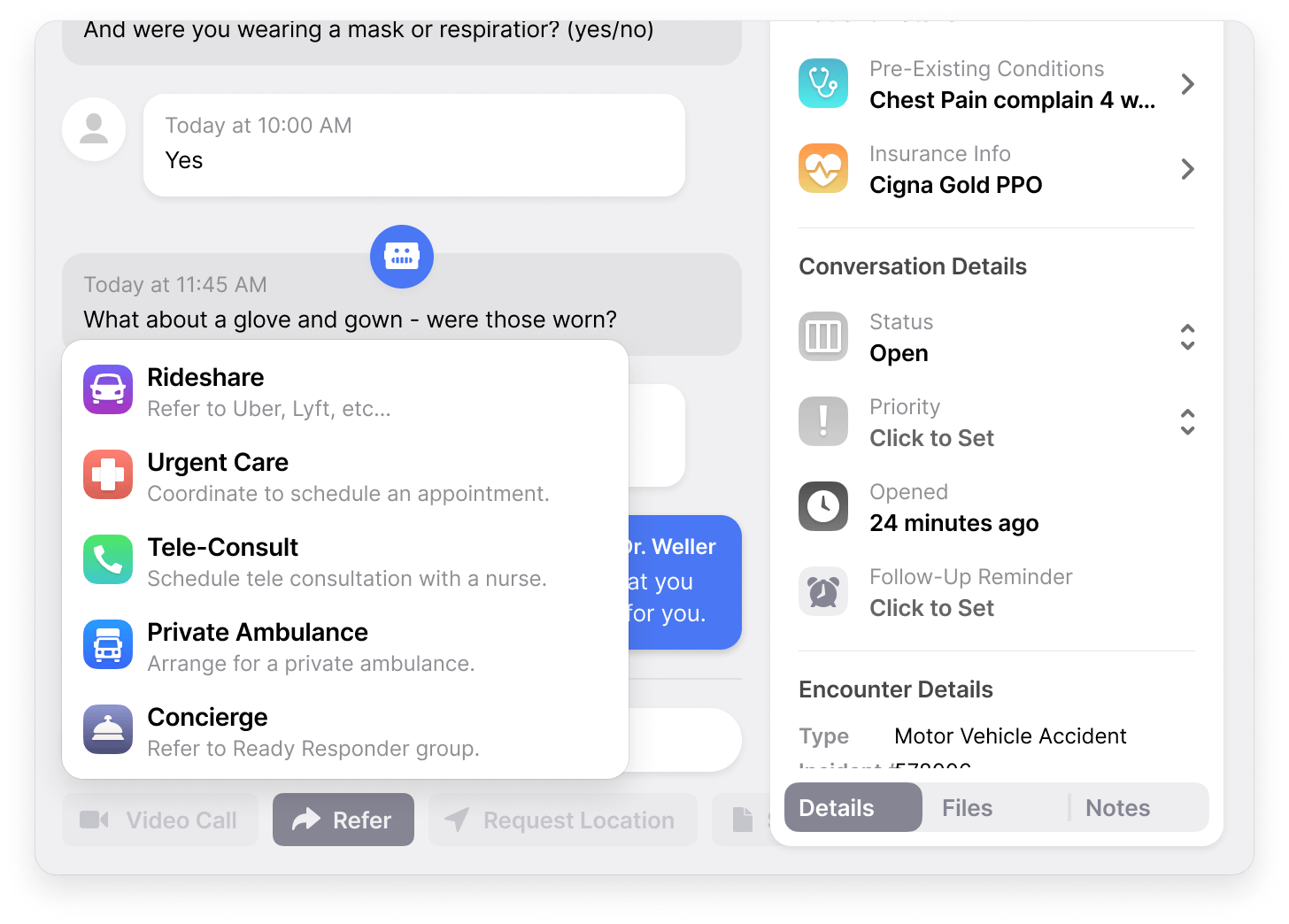
Each conversation has as much context as we can possibly provide and varies depending on the agency's system. For example, we can display the caller's name such as name and encounter location, pre-existing conditions and insurance details. The responder can also change the conversation status based on their specific workflow, set the priority tag, see how long the conversation has been open for, and set a follow-up reminder. They can also add their own notes to each conversation and view a list of all the files and images at a glance.
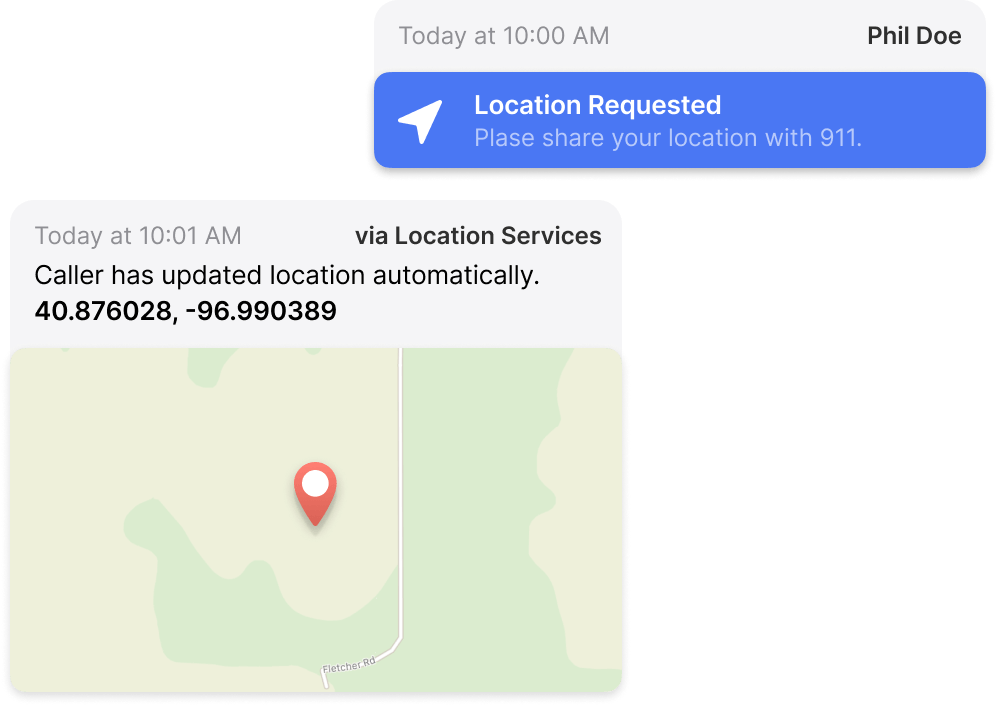
Insights
Our customers needed a powerful way to perform in-depth analysis to better understand the quality of service they provide, and expected to be able to filter through their data. Each agency had their specific requirement and variants of their own data set. As a result, we've integrated with Amazon QuickSight (AWS GovCloud) to provide them with a fast business intelligence service that enabled them to deliver insights to everyone in their agency.
In addition, we’ve developed an activity dashboard to give chiefs and managers an overview of all the activities on our system. All of the most important data is available at a glance - starting with today’s insights which displays survey answer ratio, the amount of rules trigerred and surveys sent out for that specific day, as well as the top rules and top encounter types. The admin can drill out and see surveys that have been marked as pending review, and also review sent surveys and view all the encounters and whenever a rule matched each specific encounter.
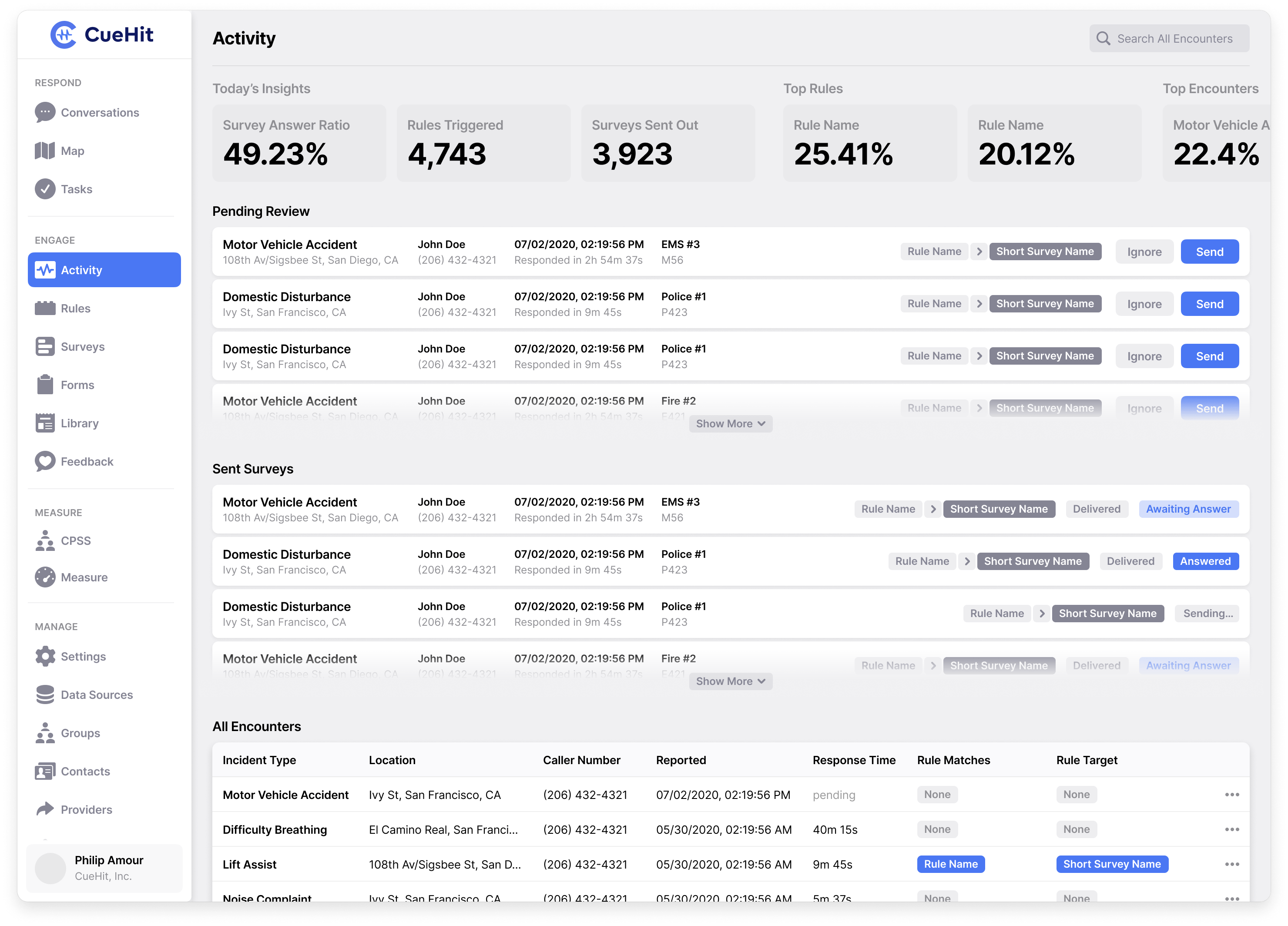
Feedback Board
More than 80% of call-takers and first responders experience trauma in their job. Unbeknownst to the public, first responder suicide rates are trending upwards despite national rates decreasing. We wanted to make an impact, and help and bring some positivity to all of the heroes who serve and protect the US citizens.
We've noticed a trend where folks have a 'positivity board' in their offices to boost morale and encourage them to keep doing great job, and wanted to help.
A ML model was developed to give each survey response a sentiment. The administrator will then review survey responses with positive sentiments and approve them to be shown on a list with personally identifiable data filtered out, which anyone at the agency can view.
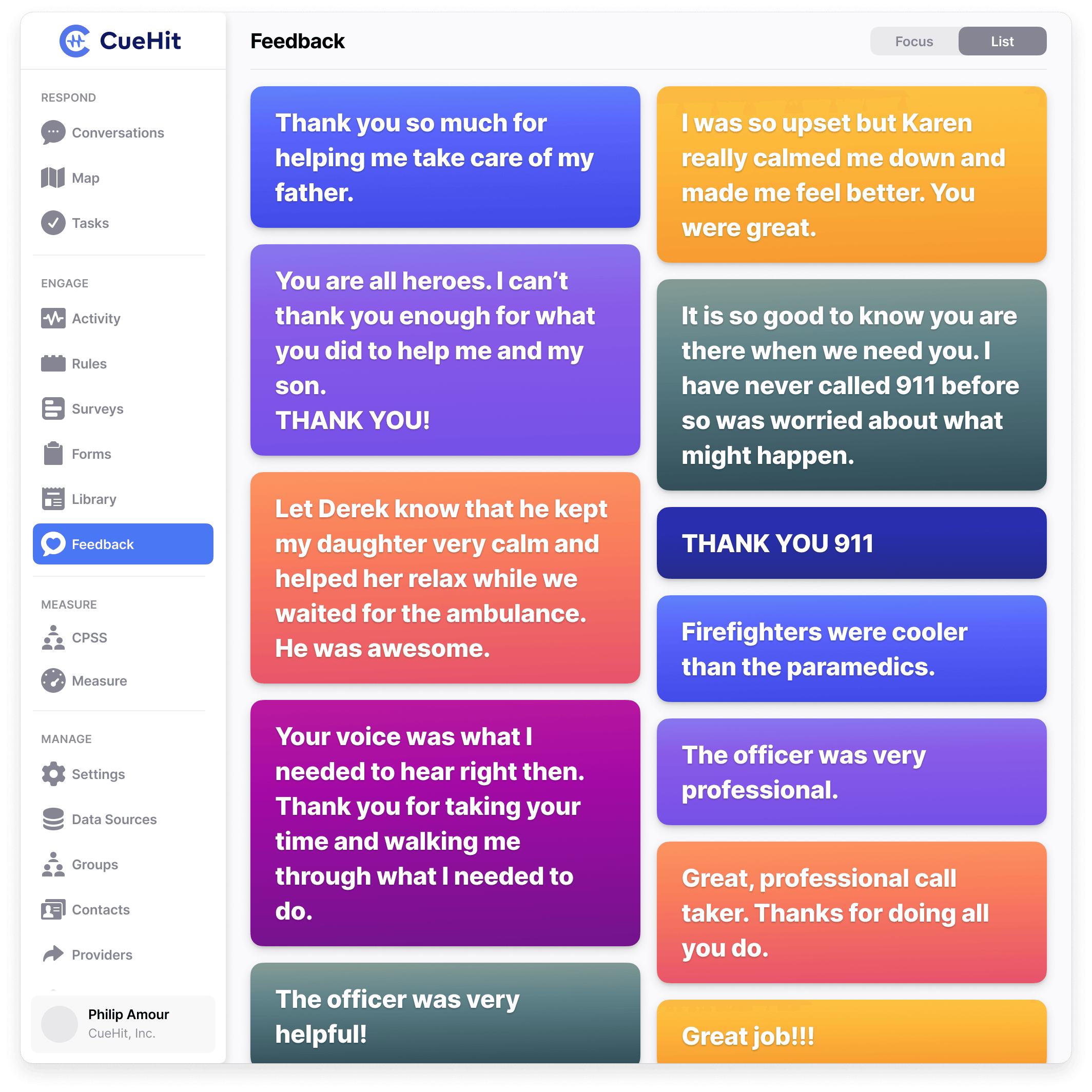
The feedback we've received was amazing. Responders loved the feedback board, and wanted to have a dedicated screen for everyone to see. So we've created a massive UI with positive feedback messages being cycled through - optimized for large screens in the middle of the room that everyone can see and hopefully makes them see the positive impact they have on the community.
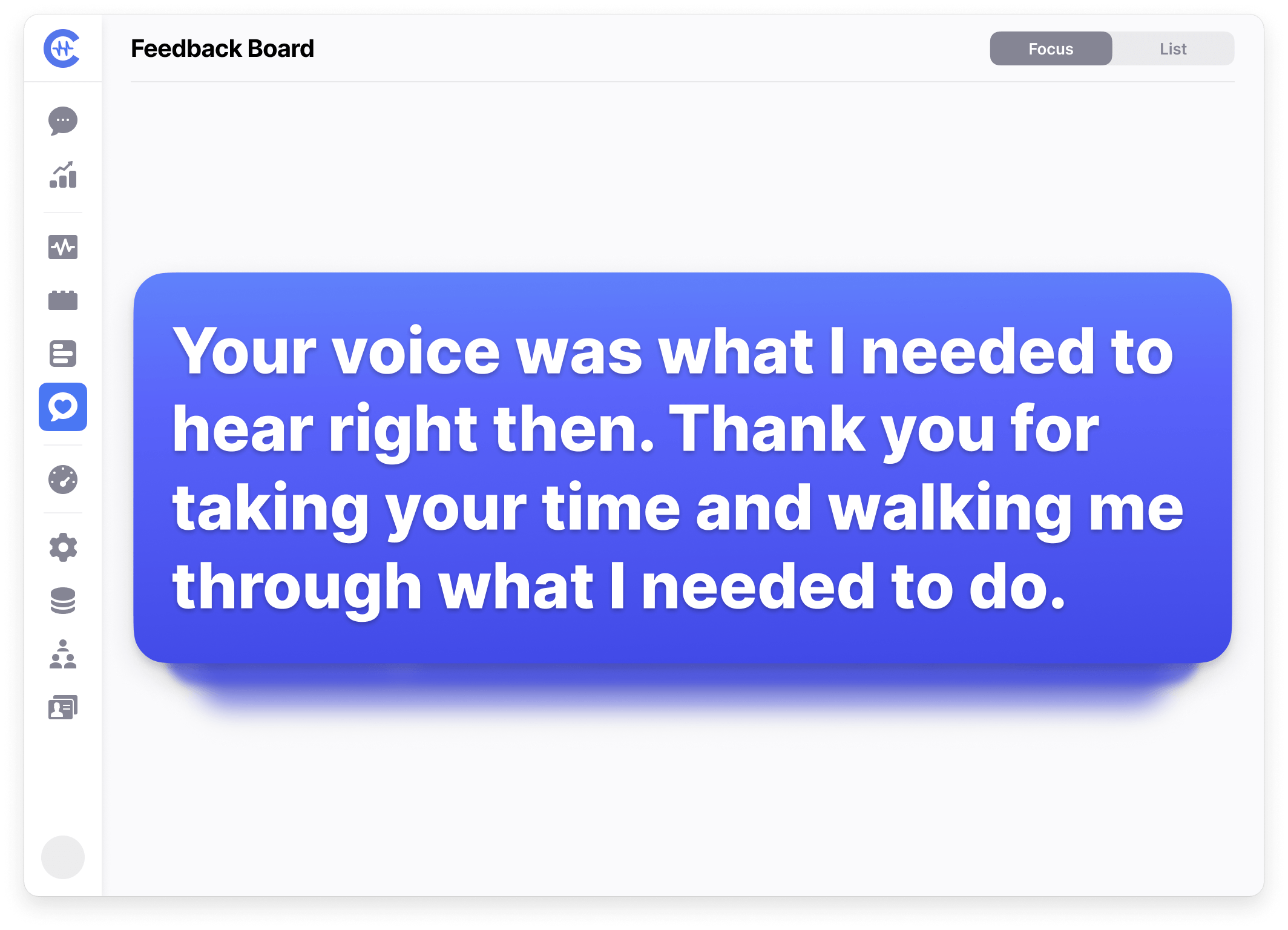
Results
After shipping and iterating on the satisfaction surveys, we're seeing a lot of positive impact.
Our customers are reporting high response rate, some seeing 50% response rate - a 9x increase compared to before using CueHit!
Responders are now receiving more relevant and fast feedback.
Police chiefs are utilizing our tools to build better relationship between the public.
Counties with CueHit are seeing better outcomes.
Feedback Board is one of the most loved features increasing morale and bettering mental health of responders.
Agencies are getting better and deeper insights, enabling them to improve their service and follow up with the citizens.
In less than a year, we've deployed CueHit to 50+ paying customers ranging from police departments to 911 call centers.
CueHit partnered with multiple agencies, including Union County PD and 9-1-1 in New Jersey to introduce a new era of community engagement for public safety.

“With a passion for design and a commitment to the highest quality experiences, Phil Amour was instrumental in bringing our startup from concept to market adoption in record time. As one of our founding team members at CueHit, Phil demonstrated a highly creative and intuitive sense of design - in all areas of our product and even our brand and marketing assets. He often developed design concepts from scratch and quickly learned a new demographic of users. Phil directly contributed to our rapid success and would be an asset to any team looking for the best in the field.”
Scott MacDonald
CEO & Cofounder of CueHit

